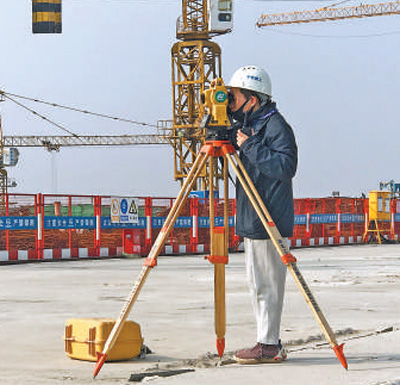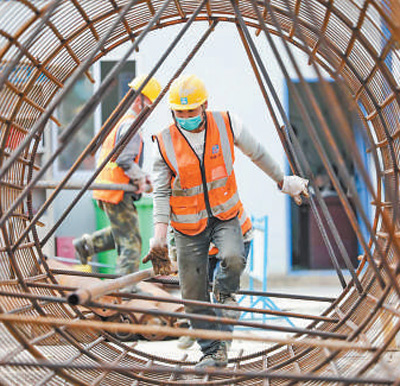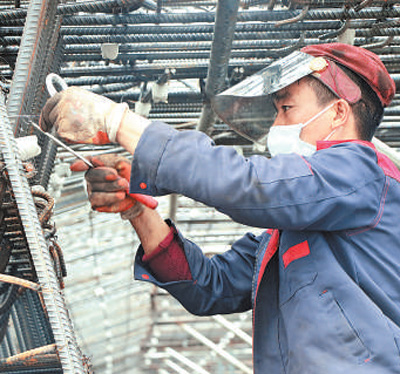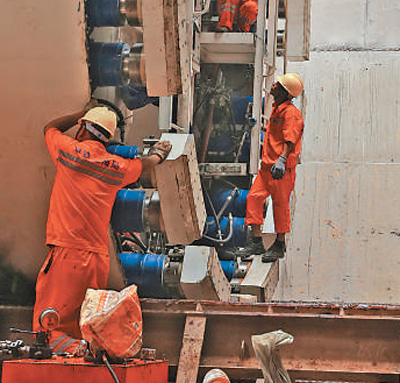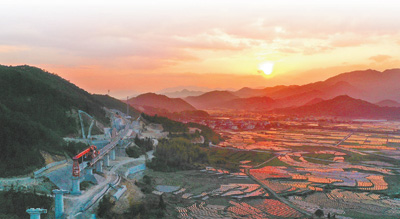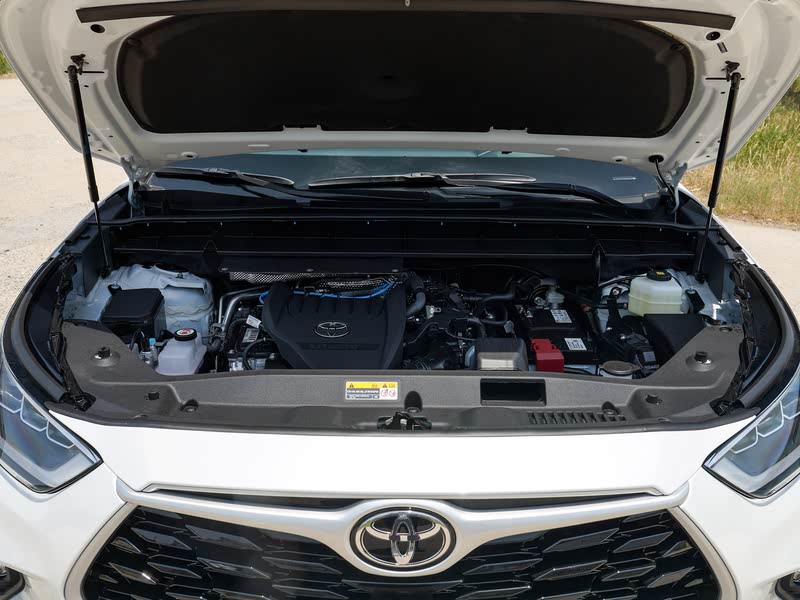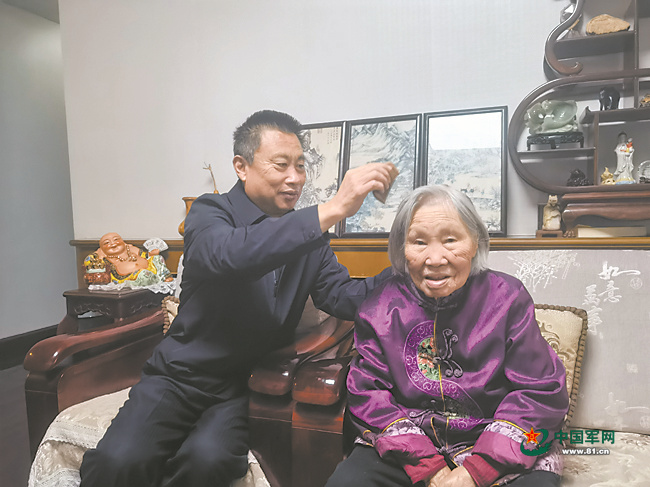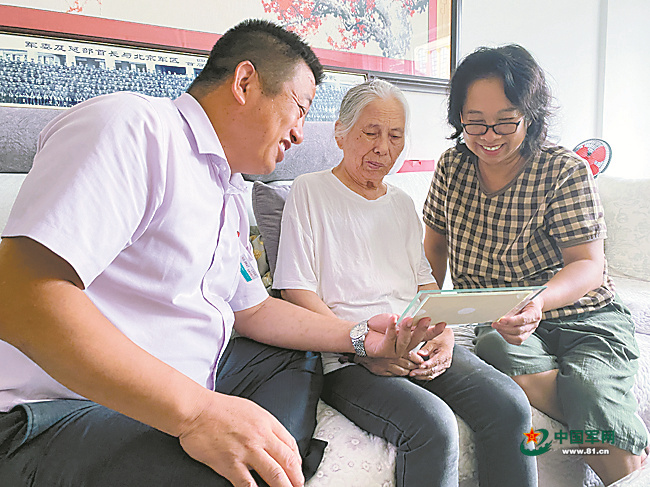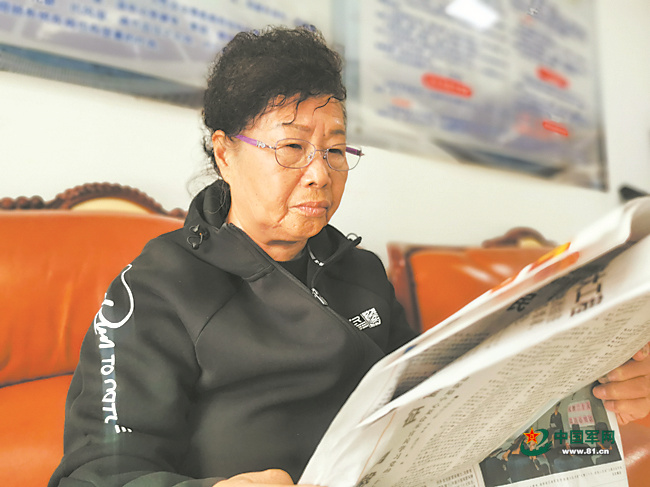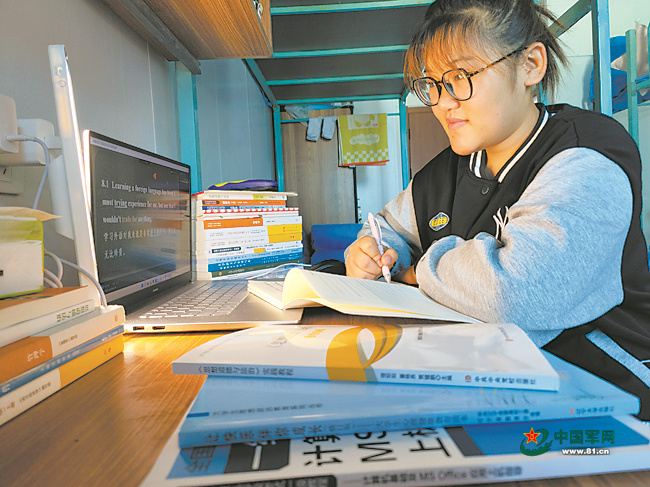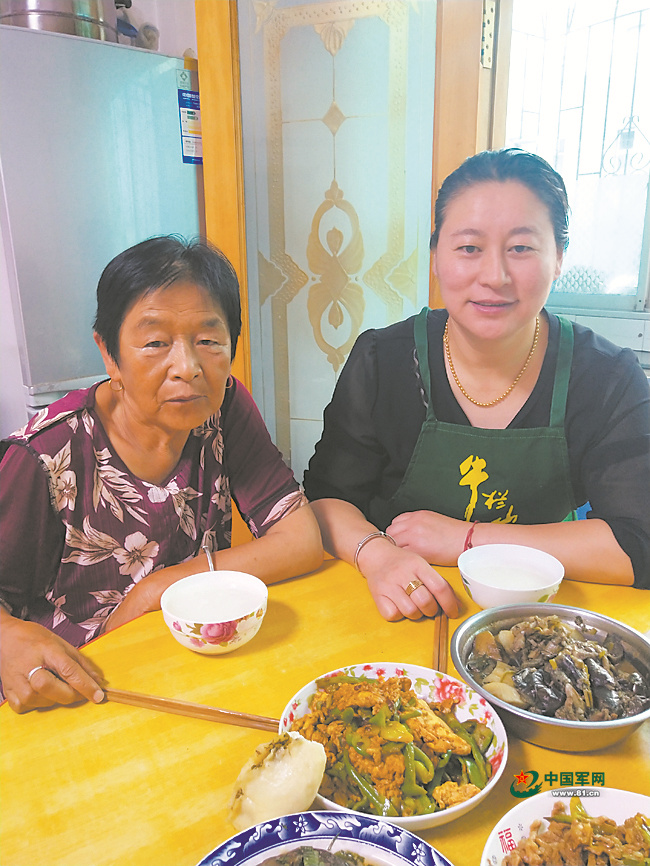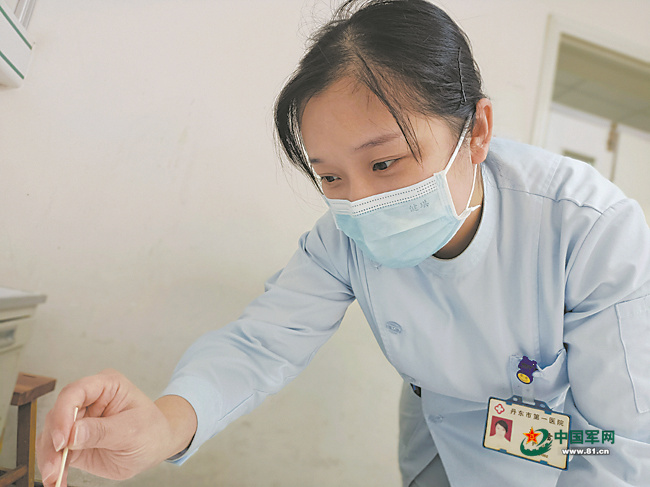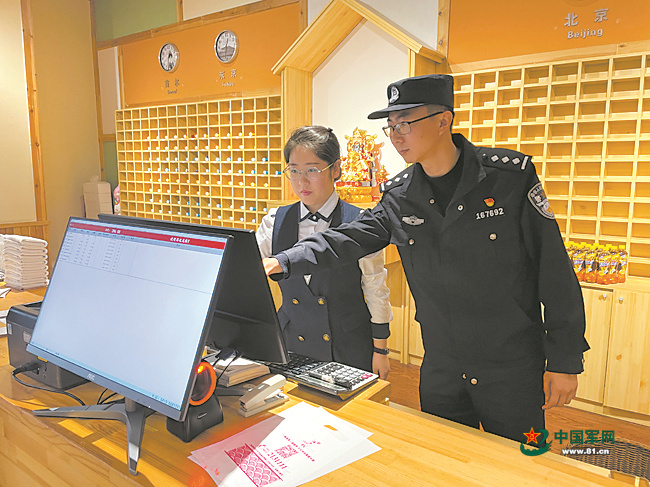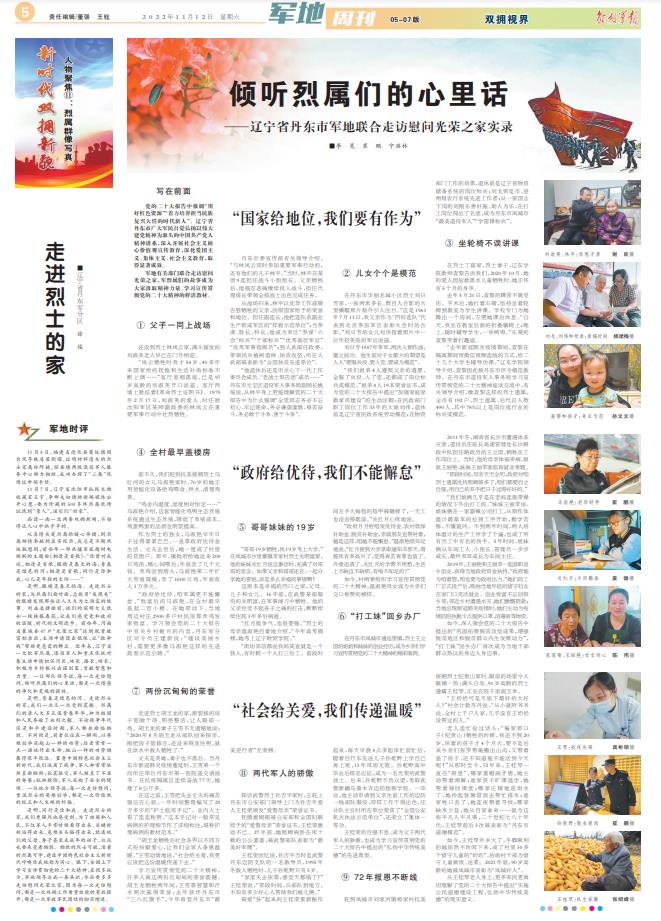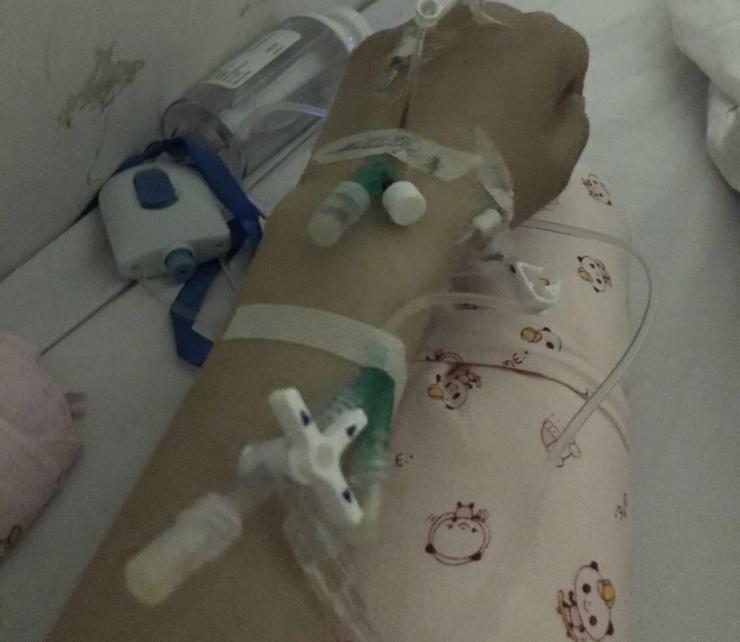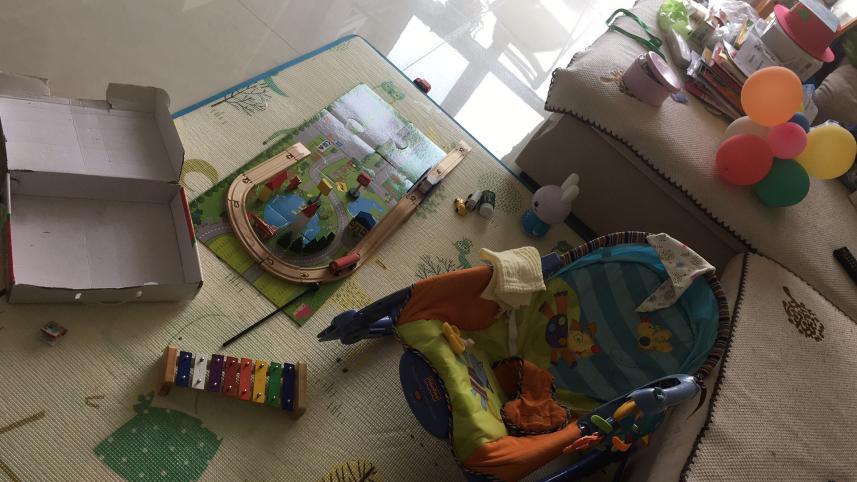State and municipal people’s governments, provincial committees, offices, departments and bureaus:
"Yunnan earthquake emergency plan" has been agreed by the provincial people’s government and is hereby issued to you, please earnestly organize the implementation. The Yunnan Earthquake Emergency Plan (Yun Zheng Ban Fa [2014] No.16) issued on April 4, 2014 shall be abolished at the same time.
General Office of Yunnan Provincial People’s Government
December 21, 2021
(This piece is publicly released)
Yunnan earthquake emergency plan
1 General rules
1.1 Guiding ideology
Guided by the Supreme Leader’s Socialism with Chinese characteristics Thought in the New Era, thoroughly implement the important exposition of the Supreme Leader’s General Secretary on preventing and resolving major security risks, disaster prevention, mitigation and relief, and inspect the spirit of Yunnan’s important speech, adhere to the people first, life first, adhere to the combination of prevention first, prevention and rescue, adhere to the unity of normal disaster reduction and abnormal disaster relief, strengthen the construction of emergency rescue capabilities, and standardize the earthquake emergency rescue command system. Organize earthquake emergency prevention and disposal according to law, scientifically, efficiently and orderly, minimize the risk of earthquake disasters, reduce casualties and economic losses, and provide security for realizing high-quality economic and social development in our province.
1.2 Compilation basis
People’s Republic of China (PRC) Emergency Response Law, People’s Republic of China (PRC) Earthquake Preparedness and Disaster Mitigation Law, Regulations on Natural Disaster Relief, Regulations on Destructive Earthquake Emergency, Regulations on Military Participation in Emergency Rescue and Disaster Relief, Regulations on Earthquake Preparedness and Disaster Mitigation in Yunnan Province, National Earthquake Emergency Plan, and Implementation Opinions of Yunnan Provincial People’s Government of Yunnan Provincial Committee of the Communist Party of China on Promoting the Reform of Disaster Prevention and Mitigation System and Mechanism.
1.3 Scope of application
This plan is applicable to the response to earthquakes in Yunnan Province and earthquakes in neighboring provinces (autonomous regions and municipalities) and neighboring countries that affect Yunnan Province.
1.4 working principles
Adhere to the working principles of Party committee leadership and government leadership, giving priority to prevention, combining peacetime and wartime, military and civilian cooperation, social participation, graded responsibility, territorial priority, resource sharing and rapid response.
2 organizational system
2.1 Provincial Earthquake Relief Headquarters
2.1.1 Provincial Earthquake Relief Headquarters is responsible for unified command and coordination of earthquake prevention and disaster reduction, earthquake relief, recovery and reconstruction in the whole province under the guidance of the leadership of the provincial party committee and the provincial government and the the State Council Earthquake Relief Headquarters; To guide the work of state and municipal earthquake relief headquarters; Complete other tasks assigned by the Provincial Party Committee, the provincial government and the the State Council Earthquake Relief Headquarters.
2.1.2 Provincial Earthquake Relief Headquarters: Provincial Party Committee Propaganda Department, Provincial Party Committee Network Information Office, Provincial Development and Reform Commission, Provincial Department of Industry and Information Technology, Provincial Department of Education, Provincial Department of Science and Technology, Provincial Ethnic and Religious Committee, Provincial Public Security Department, Provincial Civil Affairs Department, Provincial Department of Justice, Provincial Department of Finance, Provincial Department of Natural Resources, Provincial Department of Ecological Environment, Provincial Department of Housing and Urban-Rural Development, Provincial Department of Transportation, Provincial Department of Agriculture and Rural Affairs, Provincial Department of Water Resources and Provincial Department of Commerce. Provincial Emergency Department, Provincial Audit Office, Provincial Foreign Affairs Office, Provincial State-owned Assets Supervision and Administration Commission, Provincial Market Supervision Bureau, Provincial Radio, Film and Television Bureau, Provincial Energy Bureau, Provincial Forestry and Grass Bureau, Provincial Bureau of Statistics, Provincial Water Diversion Construction and Management Bureau in Central Yunnan, Provincial Grain and Reserve Bureau, Communist Youth League Committee, Provincial Red Cross Society, Provincial Federation of Supply and Marketing Cooperatives, Yunnan Airport Group, China Railway Kunming Bureau Group Co., Ltd., Kunming Customs, Provincial Communications Administration, Provincial Seismological Bureau, Provincial Meteorological Bureau, and so on.
2.1.3 The commander of the provincial earthquake relief headquarters is led by the provincial people’s government, and the deputy commander is the deputy commander of the Yunnan Military Region, the deputy commander of the 31663 Army, the deputy commander of the Yunnan Armed Police Corps, the deputy secretary-general of the provincial government, the director of the provincial emergency department, the director of the provincial housing and urban construction department, the director of the provincial seismological bureau, the chief of the provincial fire rescue corps and the chief of the provincial forest fire brigade. Under the office in the provincial emergency department, the director is in charge of the leadership of the provincial emergency department, and the deputy director is in charge of the leadership of the Provincial Seismological Bureau and the Provincial Department of Housing and Urban-Rural Development.
After the occurrence of a major earthquake, the "XXX·X earthquake relief headquarters" (hereinafter referred to as the special headquarters) was established as appropriate, and several working groups, such as comprehensive coordination, were set up to be responsible for unified command and coordination of earthquake relief work for specific earthquake disasters. After the earthquake relief, the special headquarters was cancelled according to the procedure.
2.2 state, city, county and district earthquake relief headquarters
State, city, county and district people’s governments shall set up earthquake relief headquarters, which shall be responsible for unified leadership, command and coordination of earthquake prevention and disaster reduction, earthquake relief, recovery and reconstruction in their respective administrative areas; Implement the decision-making arrangements of the CPC Central Committee and the State Council and the work requirements of the provincial party committee, the provincial government and the provincial earthquake relief headquarters, and cooperate with and assist the provincial earthquake relief headquarters and its working group to carry out their work.
3 response mechanism
3.1 Earthquake disaster classification
Earthquake disasters are divided into four levels: particularly serious, major, large and general.
3.1.1 A particularly serious earthquake disaster refers to an earthquake disaster that caused more than 300 deaths (including missing) in the province, or the direct economic loss accounted for more than 1% of the province’s GDP in the previous year.
An earthquake of magnitude 7.0 or above occurred in densely populated areas, and an earthquake of magnitude 6.5 or above occurred in densely populated areas, which was initially judged as a particularly serious earthquake disaster.
3.1.2 A major earthquake disaster refers to the death (including missing) of more than 50 people and less than 300 people in the province.
Earthquakes with magnitude above 6.0 and below 7.0 occurred in densely populated areas, and earthquakes with magnitude above 5.5 and below 6.5 occurred in densely populated areas, which were initially judged as major earthquake disasters.
3.1.3 A major earthquake disaster refers to the death (including missing) of more than 5 people and less than 50 people in the province.
Earthquakes of magnitude above 5.0 and below 6.0 occurred in densely populated areas, and earthquakes of magnitude above 4.5 and below 5.5 occurred in densely populated areas, which were initially judged as major earthquake disasters.
3.1.4 General earthquake disaster refers to the death (including missing) of less than 5 people in the province.
Earthquakes of magnitude above 4.5 and below 5.0 occurred in densely populated areas, and earthquakes of magnitude above 4.0 and below 4.5 occurred in densely populated areas, which were initially judged as general earthquake disasters.
3.2 Graded response
3.2.1 Classification of Response Levels
According to the classification of earthquake disasters, the provincial emergency response to earthquake disasters is divided into grade I, II, III and IV. Respond to particularly serious earthquake disasters and start a level I response; Respond to major earthquake disasters and start level II response; In response to a major earthquake disaster, start a level III response; In response to general earthquake disasters, a Class IV response was initiated.
3.2.2 Response Level Start-up
(1) The provincial emergency response shall be initiated by the Provincial Disaster Reduction Committee. The state, city, county and district emergency response shall be initiated by the disaster reduction committee at the corresponding level.
(2) When the provincial level I and II emergency response is started, the provincial earthquake relief headquarters is responsible for unified leadership, command and coordination of the province’s earthquake relief work; When the provincial level III emergency response is started, the state and municipal earthquake relief headquarters shall be responsible for unified leadership, command and coordination of the earthquake relief work in their respective administrative regions; When the provincial level IV emergency response is started, the county, city and district earthquake relief headquarters shall be responsible for unified leadership, command and coordination of earthquake relief work in their respective administrative regions. When the provincial level III and IV emergency response is started, the provincial earthquake relief headquarters will send a working group to guide the earthquake relief work as appropriate.
(3) The people’s governments of states, cities, counties and districts shall determine the earthquake emergency response level at the corresponding level according to the earthquake disaster situation. Neighboring states and cities shall, according to the disaster situation, start the emergency response at the corresponding level in their respective administrative regions as appropriate.
(4) After the emergency response is started, it should be adjusted according to the development of the disaster or the start of the superior response in time to avoid insufficient response or excessive response. According to the principle of "whoever issues it will terminate it", the emergency response will be terminated in time when the staged work of earthquake relief is over.
4 Prevention and early warning
4.1 Team Capacity Building
4.1.1 All member units shall, in accordance with the unified deployment of the provincial earthquake relief headquarters, strengthen the construction of professional emergency rescue teams such as provincial earthquake disaster emergency rescue, fire rescue, forest fire rescue, medical and health rescue, traffic rescue, communication emergency rescue, geological disaster rescue, mine rescue and dangerous chemical rescue, equip with necessary materials, equipment and equipment, and regularly carry out coordinated drills to improve their ability to jointly respond to earthquake disasters.
4.1.2 Provincial State-owned Assets Supervision and Administration Commission is responsible for guiding provincial state-owned enterprises to strengthen the construction of earthquake emergency rescue teams, give play to the advantages of industry and location, and prepare for emergency rescue. Property units, management or production and business units of lifeline engineering facilities such as water supply, power supply and gas supply should strengthen the construction of emergency repair teams.
4.1.3 State, city, county and district people’s governments should organize and mobilize all social forces, establish grassroots earthquake rescue and relief teams, and strengthen daily management and training. Neighboring states, cities, counties, and districts’ earthquake relief headquarters and member units should establish a sharing mechanism to share basic earthquake data, emergency forces, relief materials and other information, jointly formulate special earthquake emergency plans, regularly carry out joint training and joint performances, and prepare for cross-regional support. All localities and relevant departments should give full play to the role of the Communist Youth League and the Red Cross Society, rely on social groups, enterprises, institutions and communities to establish a volunteer team for earthquake emergency rescue, and form a social mobilization mechanism for extensive participation in earthquake emergency rescue.
4.1.4 All kinds of earthquake relief teams should be equipped with necessary medical surgical masks, medical protective masks, hand-free disinfectant (gel), medical isolation suits, medical protective suits, latex gloves and other epidemic prevention and control materials, and do a good job in epidemic prevention and control training.
4.2 Construction of command system
4.2.1 The offices of earthquake relief headquarters at all levels should establish and improve the information collection and transmission mechanism and smooth channels, so as to realize timely feedback of earthquake situation and disaster situation, rapid docking of task requirements and accurate assessment of disaster losses, and ensure scientific decision-making, efficient command and accurate scheduling of earthquake relief headquarters at the corresponding level.
4.2.2 Governments at all levels and relevant departments should adhere to the principle of being effective, practical and easy to use, improve and perfect the earthquake emergency plan and the work plan for emergency handling of particularly serious earthquake disasters, and form a horizontal and vertical earthquake emergency plan system. State, city, county, district people’s governments and their relevant departments should improve the earthquake relief headquarters, implement relevant guarantees, equip emergency communication, command, lighting and office equipment, determine emergency commanders, and clarify the division of responsibilities.
4.3 Disaster relief materials and funds preparation
4.3.1 Provincial Development and Reform Commission, Provincial Emergency Department, Provincial Health and Wellness Committee, Provincial Department of Industry and Information Technology, Provincial Department of Commerce, Provincial Grain and Reserve Bureau and other departments should reserve earthquake relief materials in accordance with the relevant provisions of the state and our province, build, rebuild, expand and utilize the national material reserve library, establish and improve the emergency material reserve network and production, allocation and emergency distribution system, and ensure the life relief materials, daily necessities and medical devices needed for earthquake emergency work.
4.3.2 State, city, county and district people’s governments and their relevant departments shall, in accordance with relevant laws and regulations, do a good job in emergency material storage, and ensure the production and supply of emergency materials, daily necessities and emergency equipment by signing agreements with relevant production and operation enterprises.
4.3.3 Governments at all levels should ensure that the funds needed for earthquake prevention and disaster reduction and earthquake relief work are included in the budget management. Give appropriate support to areas that have reached the provincial emergency response, are greatly affected by earthquake disasters and have financial difficulties. Provincial Emergency Department, Provincial Department of Finance, Provincial Development and Reform Commission and other departments should actively apply for relevant policies and financial support from relevant state ministries and commissions according to the earthquake disaster losses. Encourage States, cities or regions with outstanding earthquake disaster risks to actively participate in the pilot and promotion of earthquake insurance in light of their own reality.
4.4 Construction and management of emergency shelters
4.4.1 State, city, county, district people’s governments and their relevant departments should use squares, green spaces, parks, schools, stadiums, etc. to set up emergency shelters according to local conditions, equipped with necessary facilities and materials such as transportation, communication, water supply, power supply, sewage discharge, environmental protection, etc., and make overall consideration of the needs of epidemic prevention and control.
4.4.2 Schools, hospitals, theaters, shopping malls, hotels, stadiums and other crowded places should be equipped with earthquake emergency evacuation passages, equipped with necessary life-saving and risk-avoidance facilities and equipment to ensure smooth passage and exit. Relevant units shall regularly test and maintain alarm devices and emergency rescue facilities and equipment to keep them in good condition.
4.5 Infrastructure preparation
4.5.1 Provincial Public Security Department, Provincial Department of Transportation, Provincial Department of Natural Resources, Yunnan Airport Group, China Railway Kunming Bureau Group Co., Ltd. and other departments and units should coordinate the establishment of emergency transportation security systems for roads, railways, aviation and water transportation, strengthen unified command and dispatch, formulate necessary traffic control measures, and establish and improve the green channel for emergency rescue.
4.5.2 Provincial Communications Administration and other units should establish and improve the emergency communication guarantee mechanism, formulate a "white list" of earthquake emergency communication guarantee, and give priority to ensuring smooth emergency communication in key areas, key departments and key populations. Establish an emergency communication support system that combines wired and wireless communication, and the basic communication network is matched with the mobile communication system to ensure the smooth communication of earthquake emergency rescue and get through the public communication network in the disaster area as soon as possible.
4.5.3 Provincial Department of Housing and Urban-Rural Development, Provincial Department of Transportation, Provincial Department of Water Resources, Provincial Department of Industry and Information Technology, Provincial Energy Bureau, Provincial Seismological Bureau and other departments should strengthen the supervision and management of seismic fortification of major construction projects, lifeline projects and other infrastructure. Departments in charge of various industries should promptly organize the reinforcement of old facilities.
4.5.4 Provincial Department of Natural Resources, Provincial Department of Water Resources, Provincial Department of Housing and Urban-Rural Development, Provincial Energy Bureau and other departments should make overall plans for the construction of emergency water supply and gas supply to ensure the safety of emergency water supply and gas supply.
4.5.5 The Provincial Energy Bureau and the electricity regulatory authorities shall guide, coordinate and supervise the power operation enterprises to strengthen the construction of power infrastructure and power dispatching system to ensure the power supply needs in disaster areas.
4.5.6 Provincial Radio and Television Bureau is responsible for restoring the damaged radio and television transmission network.
4.5.7 During the epidemic prevention and control, it is necessary to implement epidemic prevention and control measures, and make overall preparations for isolation points and temporary designated hospitals.
4.6 Publicity, training and drills
4.6.1 Emergency, publicity, education, culture and tourism, science and technology, radio and television, press and publication, earthquake and other departments should cooperate closely to carry out legal knowledge and publicity and education on earthquake prevention and disaster reduction, mobilize the public to actively participate in earthquake prevention and disaster reduction activities, and improve the ability of earthquake prevention and disaster reduction and self-help and mutual rescue of the whole society. Schools should incorporate the knowledge of earthquake prevention and disaster reduction and self-help and mutual aid into publicity and education, strengthen the training of professionals in earthquake prevention and disaster reduction, and the competent departments of emergency, education and earthquake should strengthen guidance and supervision.
4.6.2 Governments at all levels and their relevant departments should establish and improve the training system for earthquake prevention, disaster reduction and relief, and organize relevant departments, rescue teams and volunteer teams to carry out earthquake disaster knowledge and rescue skills training in light of local conditions.
4.6.3 People’s governments of states, cities, counties and districts in key earthquake danger areas shall carry out at least 2 times a year, and people’s governments of other states, cities, counties and districts shall carry out at least 1 earthquake comprehensive emergency drill every year. Departments in charge of various industries at all levels shall carry out at least one special earthquake emergency drill or drill with earthquake emergency as an important content every year.
4.7 emergency preparedness inspection
4.7.1 Emergency preparedness inspection shall be carried out by combining self-inspection with spot check in accordance with relevant regulations. The Provincial Emergency Department, the Provincial Department of Housing and Urban-Rural Development and the Provincial Seismological Bureau shall, jointly with relevant departments, form a joint inspection team to regularly or irregularly inspect the earthquake emergency preparedness in the province.
4.7.2 The people’s governments at the state, city, county and district levels shall regularly organize relevant departments to inspect the earthquake relief headquarters and its operation, emergency plan and working mechanism, command system, material reserve, fund guarantee, emergency communication ability, emergency shelter construction and management, popular science propaganda, rescue team, volunteer team, earthquake monitoring and earthquake situation tracking, and the seismic fortification of various engineering facilities.
4.8 Monitoring and forecasting and disaster reporting mechanism construction
4.8.1 The Seismological Bureau of the province should strengthen the construction of seismic network in the whole province, be responsible for collecting and managing all kinds of seismic observation data in the whole province, and put forward opinions on the determination of annual key dangerous areas and the work of earthquake prevention and disaster reduction; Immediately report the earthquake information to the provincial people’s government and the office of the provincial earthquake relief headquarters, and put forward emergency preventive measures. The earthquake work departments of each state, city, county and district should strengthen earthquake monitoring, earthquake tracking and monitoring, and group monitoring and prevention, and make comprehensive analysis and judgment on earthquake prediction opinions and abnormal phenomena that may be related to earthquakes in a timely manner.
4.8.2 The Seismological Bureau of the province should standardize the release of earthquake early warning information, and, in conjunction with relevant units, rely on radio and television, mobile phones, internet and other means to improve and perfect the earthquake early warning information platform of the whole province, release earthquake early warning information quickly and accurately, and guide the people to do a good job in emergency avoidance.
4.8.3 After an earthquake of magnitude 4.0 or above occurs in the province, the Seismological Bureau of the province shall promptly report the time, place, magnitude, focal depth, measured intensity of instruments and other information of the earthquake to the provincial party committee, the provincial government and the provincial earthquake relief headquarters, and timely report the relevant information and release the earthquake information to the society.
4.8.4 The member units of the provincial earthquake relief headquarters shall collect and summarize the disaster information of the industry in a timely manner, analyze and evaluate the disaster relief needs, report to the office of the provincial earthquake relief headquarters, and report to the relevant state ministries and commissions in a timely manner. The office of the provincial earthquake relief headquarters should collect and summarize the information on the disaster situation and disaster relief work in a timely manner, report it to the provincial people’s government and the emergency department, and send a copy to the relevant member units of the provincial earthquake relief headquarters.
5 emergency response
5.1 Launch and Release
The determination and start of the provincial emergency response level shall be submitted for approval by the Provincial Disaster Reduction Committee in accordance with the procedures, notified to the member units of the Provincial Disaster Reduction Committee, reported to the National Disaster Reduction Committee, and released to the public through authoritative media in a timely manner.
5.2 Emergency response measures
5.2.1 When Class I and II emergency response is started.
(1) The provincial people’s government arranged for the deployment of earthquake relief work at the first time, the Provincial Seismological Bureau released the earthquake situation at the first time, and the Provincial Emergency Department released the disaster situation in time. The provincial earthquake relief headquarters held an emergency meeting to analyze and judge according to the situation, and further deployed the earthquake relief work.
(2) The provincial people’s government led the responsible comrades of the member units of the provincial earthquake relief headquarters to form a working group to rush to the disaster area to organize and direct earthquake relief operations. All member units and relevant departments sent field teams to the disaster area to carry out their work.
(3) Relevant member units of the Provincial Earthquake Relief Headquarters coordinated rescue forces such as fire fighting, forest fire fighting, aviation rescue, People’s Liberation Army stationed in Yunnan, armed police force, militia, transportation, communication, medical care and social relief to rush to the disaster area to carry out earthquake relief. After the rescue forces entered the disaster area, they accepted the unified command and deployment of the provincial earthquake relief headquarters.
(4) The Office of the Provincial Earthquake Relief Headquarters initiated relief measures such as allocation of relief materials and financial guarantee.
(5) The Office of the Provincial Earthquake Relief Headquarters shall, depending on the situation, organize a working group behind the special headquarters according to the pre-grouping scheme, and do a good job in overall coordination, information submission and decision-making service guarantee.
(6) The office of the provincial earthquake relief headquarters coordinates the government of the disaster area to set up a special headquarters in the epicenter or choose a place that is conducive to command, convenient for work, safe and reliable, divide the areas of work, life and security, establish and improve measures such as transportation, communication, power supply, water supply, flood control, lightning protection, safety, confidentiality and epidemic prevention and control, and serve the earthquake relief work.
5.2.2 When Class III emergency response is started.
(1) The provincial people’s government arranged for the deployment of earthquake relief work at the first time, the Provincial Seismological Bureau released the earthquake situation at the first time, and the Provincial Emergency Department released the disaster situation in time.
(2) The Provincial Earthquake Relief Headquarters formed a working group to rush to the disaster area to guide the earthquake-stricken areas to organize earthquake relief. Relevant member units sent on-site teams to the disaster areas to support and guide the earthquake relief in the disaster areas.
(3) The Office of the Provincial Earthquake Relief Headquarters initiated relief measures such as the allocation of relief materials and financial guarantee.
(4) The relevant member units of the provincial earthquake relief headquarters coordinate rescue forces such as fire fighting, forest fire fighting, aviation rescue, People’s Liberation Army stationed in Yunnan, armed police force, militia, transportation, communication, medical and health care, and social relief to rush to the disaster area to carry out earthquake relief. After the rescue forces entered the disaster area, they reported to the state and municipal earthquake relief headquarters for the record and accepted the task deployment in a unified manner.
5.2.3 When Class IV emergency response is started.
(1) The Office of the Provincial Earthquake Relief Headquarters collects, analyzes, judges and publishes information on earthquake situation and disaster, and coordinates the deployment of earthquake relief related work.
(2) The Office of the Provincial Earthquake Relief Headquarters made suggestions, formed a provincial earthquake relief working group as appropriate, and rushed to the disaster area to guide the earthquake relief work.
(3) The Office of the Provincial Earthquake Relief Headquarters initiated relief measures such as the allocation of relief materials and financial guarantee.
(4) The relevant member units of the provincial earthquake relief headquarters coordinate fire rescue, forest fire protection, aviation rescue, militia, medical and health rescue forces to rush to the disaster area to carry out earthquake relief. After the rescue forces entered the disaster area, they reported to the county-level earthquake relief headquarters for the record and accepted the task deployment in a unified manner.
6 disposal procedures
6.1 Disposal of particularly serious and major earthquake disasters
6.1.1 Emergency Disposal of Provincial Earthquake Relief Headquarters
(1) Information collection, summary and release
The offices of earthquake relief headquarters at all levels are responsible for collecting, counting and summarizing the disaster information at the corresponding level and reporting it step by step on time. The Office of the Provincial Earthquake Relief Headquarters is responsible for collecting and summarizing the spirit of the instructions of the central leading comrades and provincial leaders, and doing a good job in conveying and supervising the implementation. The competent departments of various industries are responsible for collecting and summarizing the information on the disaster situation and disaster relief work in their respective industries and reporting it to the office of the earthquake relief headquarters at the corresponding level. Disaster information should be standardized and reported on time, and important information should be reported immediately.
Disaster information should be strictly verified to ensure accuracy. The disaster information reported by the relevant provincial departments and units to the relevant state ministries and commissions should be consistent and synchronized with the disaster information submitted to the office of the provincial earthquake relief headquarters.
Disaster information is released to the public by the provincial earthquake relief headquarters.
(2) Comprehensive coordination
The office of the provincial earthquake relief headquarters will do a good job in comprehensive coordination of earthquake relief and decision-making service guarantee for the first time. After the establishment of the special headquarters, the comprehensive coordination group shall perform the comprehensive coordination duties; Relevant departments and units directly under the provincial level shall coordinate the earthquake relief work in this industry.
The Yunnan Military Region took the lead in establishing a military-ground docking and liaison mechanism, and was responsible for the delineation, task allocation and coordination, disaster relief data statistics of the PLA, the Armed Police Force and the militia forces, and organized relevant guarantees.
(3) Personnel search and rescue
Organize earthquake disaster emergency rescue team, fire rescue team, forest fire rescue team, People’s Liberation Army stationed in Yunnan, Armed Police Force, Mine Rescue Team, Dangerous Chemicals Emergency Rescue Team and other forces, give full play to professional advantages, scientifically distinguish forces, pay attention to rescue, rescue and medical evacuation, and carry out grid-based accurate search and rescue.
(4) medical treatment and health and epidemic prevention
Organize medical and health teams, set up temporary hospitals or medical points, rescue injured people, and send medical teams to assist search and rescue teams in on-site treatment of buried personnel; According to the need to divert the seriously wounded, the implementation of remote treatment; Strengthen the organization and dispatch of ambulances, medicines, medical devices and plasma to ensure the needs of disaster areas; Testing the safety of drinking water sources, food and medicines in disaster areas, and carrying out epidemic prevention and control and psychological assistance.
(5) Resettlement of the affected people
According to the "six haves" requirements of having food, clothing, clean water to drink, safe temporary shelter, timely treatment for illness and safe school buildings, assist the local government to transfer and resettle the affected people, allocate tents, clothing, food and other relief materials, and receive and arrange donated funds and materials for disaster relief.
Provincial Emergency Department, Provincial Department of Commerce, Provincial Grain and Reserve Bureau, Provincial Federation of Supply and Marketing Cooperatives and other departments are responsible for the emergency deployment of food, food, drinking water, refined oil and other relief materials to ensure the daily necessities and market supply of the people in the disaster areas.
The Provincial Department of Education is responsible for guiding the administrative departments of education and sports in disaster areas to properly resettle teachers and students at school and organize the resumption of classes in a timely manner.
The Provincial Department of Culture and Tourism is responsible for the evacuation and resettlement of passengers in disaster areas.
The Provincial Department of Housing and Urban-Rural Development takes the lead, and the Provincial Department of Education, the Provincial Health and Health Commission and other departments cooperate to guide the relevant administrative departments in the disaster areas to carry out emergency safety assessment and earthquake damage investigation on the construction projects and civil housing in public places such as schools and hospitals in the disaster areas, and classify and identify the construction safety.
The Provincial Red Cross Society is responsible for applying for disaster relief assistance in accordance with relevant procedures, accepting emergency assistance from the international community, and sending Red Cross rescue teams to participate in disaster relief.
(6) The aftermath of the victims
The Provincial Civil Affairs Department guides the cremation of the remains of the victims and the comfort of the families of the victims. The provincial public security department guides the DNA identification of the victims who cannot be identified.
(7) Transportation
Provincial Public Security Department, Provincial Department of Transportation, Yunnan Airport Group, China Railway Kunming Bureau Group Co., Ltd., China Eastern Airlines Yunnan Co., Ltd. and other departments and units are responsible for quickly identifying traffic interruptions, implementing traffic control, opening up a green channel for earthquake relief, repairing damaged roads, railways, ports, airports and other facilities, and ensuring the passage of disaster relief teams and vehicles; Coordinate emergency transportation capacity to ensure disaster relief transportation demand.
(8) Emergency communication
Provincial Communications Administration is responsible for organizing and coordinating communication operators, quickly repairing damaged communication facilities, enabling emergency communication equipment, setting up temporary dedicated lines, ensuring smooth communication for earthquake relief, and rushing through the public communication network in disaster areas as soon as possible.
(9) Power supply
The Provincial Energy Bureau and Yunnan Power Grid Corporation are responsible for organizing and mobilizing emergency repair teams, repairing damaged power facilities and equipment, and enabling emergency power generation equipment to ensure the electricity demand and safety of on-site command institutions, temporary resettlement sites and other places.
(10) Water supply and gas supply facilities
The Provincial Department of Housing and Urban-Rural Development, the Provincial Water Resources Department and the Provincial Energy Bureau are responsible for organizing forces to carry out emergency repairs on important infrastructure such as water supply and drainage, gas and so on in disaster areas, and restore the security function as soon as possible.
(11) Disaster monitoring
The Provincial Seismological Bureau is responsible for strengthening earthquake monitoring, timely reporting aftershock information, and reporting opinions on earthquake trend judgment.
The Provincial Meteorological Bureau is responsible for strengthening real-time meteorological monitoring and timely reporting meteorological conditions in disaster areas.
The Provincial Department of Natural Resources is responsible for strengthening the monitoring, early warning and prevention of geological disasters, and taking emergency measures for geological disasters found.
The Provincial Department of Ecology and Environment is responsible for organizing the ecological and environmental departments in the disaster areas to monitor the environmental pollution in the disaster areas and assisting the government in the disaster areas to take pollution prevention and control measures.
Provincial Department of Ecology and Environment, Provincial Health and Wellness Commission, Provincial Emergency Department, Provincial Energy Bureau, Provincial Fire and Rescue Corps and other departments and units are respectively responsible for strengthening the inspection and monitoring of dangerous chemical facilities, radioactive substances, oil and gas pipelines, inflammable, explosive and toxic and harmful substances that may cause secondary disasters, and preventing and handling incidents such as explosions, fires, toxic and harmful substances and leakage of radioactive substances that may cause secondary disasters.
The Provincial Department of Natural Resources, the Provincial Department of Industry and Information Technology, the Provincial Department of Water Resources, the Provincial Emergency Department, the Provincial Energy Bureau and other departments are responsible for closely monitoring key industries such as reservoirs, dammed lakes, mines, tailings ponds, metallurgy, hazardous chemicals production and operation enterprises and major potential risks in accordance with their functions and duties, and finding dangerous situations in time and properly handling them.
(12) Public security and stability
The Provincial Public Security Department and the Yunnan Armed Police Corps are responsible for social security management and security work in disaster areas, strengthening the vigilance against key targets such as party and government organs and financial units, resettlement sites, storage warehouses, distribution points for relief materials, prisons, detention centers and detention points, and preventing and responding to violent terrorist incidents, preventing and cracking down on various illegal and criminal activities, and maintaining social stability.
(13) Social mobilization
Provincial Emergency Department and Provincial Civil Affairs Department are responsible for the service management of social workers and volunteers; Set up a service platform in time, unify the docking of social work service agencies and recruit volunteers, and do a good job in the dispatch of social workers and volunteer service teams and related services; According to the needs of the disaster areas, we will publish a guide to the demand for volunteer services to guide social workers and volunteers to participate in disaster relief in a safe and orderly manner. The Provincial Emergency Department, the Provincial Red Cross Society, the Provincial Charity Federation and public welfare social organizations with the purpose of disaster relief carry out donation activities, and do a good job in receiving, counting, managing, distributing, using, publicizing and giving feedback of donated money and materials. The emergency department shall, jointly with the supervision, auditing, finance and other departments, supervise and inspect the use and distribution of disaster relief donations in a timely manner.
(14) Foreign affairs
The Foreign Affairs Office of the province and other departments shall, jointly with the local government, properly resettle the overseas personnel in the disaster area and inform the consular offices of relevant countries and regions in China of the relevant situation in a timely manner.
The Propaganda Department of the Provincial Party Committee, the Foreign Affairs Office of the Province, Kunming Customs and other departments should promptly handle the entry of rescue teams, experts and relief materials from abroad into Yunnan, and handle and arrange news reporters from abroad to cover the disaster areas.
(15) news propaganda
The Propaganda Department of the Provincial Party Committee, the Network Information Office of the Provincial Party Committee, the Provincial Emergency Department, the Provincial Public Security Department, the Provincial Seismological Bureau and other departments held timely press conferences to announce the earthquake situation, disaster situation and disaster relief work to the public, strengthen the management of news propaganda work, correctly guide public opinion, and timely discover and deal with public grievances.
(16) direct economic loss assessment
Provincial Seismological Bureau is responsible for organizing earthquake disaster investigation and loss assessment; The relevant departments and units directly under the provincial level and the disaster-stricken government are responsible for carrying out disaster verification and statistics, forming disaster reports in time and submitting them to the Provincial Seismological Bureau, and cooperating with the Provincial Seismological Bureau to carry out direct economic loss assessment of disasters. The direct economic loss assessment report of the disaster shall be submitted to the provincial people’s government and copied to the office of the provincial earthquake relief headquarters.
(17) Termination of emergency response
When the emergency rescue work has been completed, the emergency rescue and disaster relief work has basically ended, the emergency transfer and resettlement work has basically been completed, the secondary disasters of the earthquake have basically been eliminated, and the "lifeline projects" such as transportation, electricity, communication and water supply have been rushed through, and the social order in the disaster area has basically been restored, the emergency response has been terminated, and the rescue workers have been evacuated from the disaster area in an orderly manner.
(18) Resume production
The Provincial Development and Reform Commission, the Provincial Department of Finance, the Provincial Department of Housing and Urban-Rural Development, the Provincial Department of Commerce, the Provincial Emergency Department, the Provincial Department of Industry and Information Technology, the Provincial Department of Agriculture and Rural Affairs, the Provincial Department of Natural Resources, the Yunnan Banking Insurance Regulatory Bureau and other departments should investigate and verify the damage of the affected industrial, mining, commercial, agricultural and other engineering buildings in accordance with the division of responsibilities, implement supporting funds and materials, urge relevant insurance institutions to make efficient claims and help resume production.
6.1.2 Emergency response by the disaster-stricken government
The disaster-stricken government is responsible for verifying the disaster situation and reporting it to the government at the next higher level and the earthquake relief headquarters in time, and the leapfrog report can be synchronized in special circumstances; Organize and mobilize cadres and masses in disaster areas to quickly carry out self-help and mutual rescue; Organize local fire rescue and other rescue teams to carry out personnel search and rescue and medical rescue; Implement traffic control to ensure smooth traffic in disaster areas; Open emergency shelters and transfer and resettle the affected people in time; Emergency dispatch of relief tents, daily necessities and other relief materials and equipment to ensure the basic needs of the affected people; Organize forces to repair communications, electricity, transportation, water supply, gas supply, radio and television and other infrastructure; Take measures to prevent secondary disasters; Strengthen the vigilance of important targets and public security management, prevent and crack down on all kinds of illegal and criminal activities, and maintain social stability; Do a good job in propaganda and reporting on earthquake relief and correctly guide public opinion; According to the arrangements of the provincial party committee, the provincial government and the provincial earthquake relief headquarters, do a good job in relevant work.
6.2 Disposal of Large and General Earthquake Disasters
When a major earthquake disaster occurs, the provincial earthquake relief headquarters will send a working group as appropriate to coordinate rescue forces to participate in earthquake relief and guide the disaster-stricken government to do a good job in earthquake relief; When dealing with general earthquake disasters, give guidance and support as appropriate.
6.3 Summary of Emergency Disposal
After the end of the earthquake emergency response, the member units of the provincial earthquake relief headquarters and the disaster-stricken government should make a comprehensive summary of the earthquake relief work, form a report and submit it to the provincial people’s government, and send a copy to the office of the provincial earthquake relief headquarters.
7 Transitional resettlement and recovery and reconstruction
7.1 Transitional resettlement
Under the unified leadership of the provincial people’s government, the transitional resettlement work shall be organized and implemented by the disaster-stricken government according to the principle of graded responsibility, and the relevant member units of the provincial earthquake relief headquarters shall give guidance and support according to their duties.
7.2 Compilation and implementation of recovery and reconstruction planning
After the particularly serious earthquake disaster, in accordance with the decision-making and deployment of the State Council, the Provincial Development and Reform Commission took the lead, with the participation of the Provincial Department of Housing and Urban-Rural Development, the Provincial Department of Education, the Provincial Department of Transportation, the Provincial Department of Agriculture and Rural Affairs, the Provincial Health and Health Committee and other departments, responsible for organizing the preparation of post-disaster recovery and reconstruction plans, and providing a basis for the State Council to formulate recovery and reconstruction plans; After the occurrence of major earthquake disasters, the Provincial Development and Reform Commission takes the lead, with the participation of the Provincial Department of Housing and Urban-Rural Development, the Provincial Department of Education, the Provincial Department of Transportation, the Provincial Department of Agriculture and Rural Affairs, and the Provincial Health and Wellness Committee, and is responsible for organizing the preparation of post-earthquake recovery and reconstruction plans and organizing their implementation; After the occurrence of a major earthquake disaster, the people’s government of the disaster-stricken state and city shall be responsible for organizing the preparation of the post-earthquake recovery and reconstruction plan and organizing its implementation; After the general earthquake disaster, the county-level government in the disaster area is responsible for organizing the preparation of the post-earthquake recovery and reconstruction plan and organizing its implementation.
8 Emergency treatment of other earthquake events
8.1 Emergency response to earthquake events in neighboring provinces (autonomous regions and municipalities)
In case of earthquake disaster in neighboring provinces (autonomous regions and municipalities), depending on the degree of its impact on our province, the corresponding emergency response should be started to do a good job in earthquake relief.
8.2 Emergency response to earthquake events in neighboring countries
Earthquakes in neighboring countries, depending on their impact on our province, carry out the following work:
(1) The Seismological Bureau of the province timely reports the earthquake situation to the provincial party committee, the provincial government and the provincial earthquake relief headquarters.
(2) According to the earthquake situation and disaster situation in our province, start the corresponding emergency response and do a good job in earthquake relief.
(3) The Propaganda Department of the Provincial Party Committee, the Foreign Affairs Office of the Province, the Provincial Emergency Department, the Provincial Department of Commerce and other departments shall keep abreast of the disaster situation, public opinions and responses of the international community and report them to the provincial party Committee, the provincial government and the provincial earthquake relief headquarters. Relevant departments and units shall do relevant work in accordance with the requirements of national deployment.
(4) The people’s governments of border states, cities and counties and their relevant departments are responsible for the evacuation, evacuation and temporary resettlement of tourists, businesses and affected people.
8.3 Disposal of Other Earthquake Events
8.3.1 Emergency preparedness events
Emergency preparedness event refers to an event that needs to be implemented when the provincial people’s government issues short-term and imminent earthquake prediction (referring to the possibility of a destructive earthquake of magnitude 5.0 or above in the next three months).
(1) The Provincial Seismological Bureau is responsible for strengthening earthquake monitoring, verifying earthquake anomalies, and timely reporting opinions on earthquake trend judgment.
(2) The Provincial Emergency Department is responsible for coordinating the relevant provincial departments and units to guide and urge the state, city, county and district people’s governments in earthquake prediction areas to prepare for earthquake prevention and rescue.
(3) Provincial Public Security Department, Provincial Department of Natural Resources, Provincial Department of Ecological Environment, Provincial Department of Housing and Urban-Rural Development, Provincial Department of Transportation, Provincial Department of Water Resources, Provincial Emergency Department, Provincial Seismological Bureau and other departments are responsible for evaluating the possible consequences of earthquake events and taking countermeasures.
(4) The rescue teams of the Provincial Health and Wellness Commission, the Provincial Emergency Department, the Provincial Fire Rescue Corps, the Provincial Forest Fire Brigade and other departments and units should make good preparations for emergency rescue, and coordinate the PLA and the Armed Police Force stationed in Yunnan to make good preparations for emergency rescue.
(5) Provincial Department of Transportation, Provincial Communications Administration, Yunnan Airport Group, China Railway Kunming Bureau Group Co., Ltd., Yunnan Power Grid Corporation, Yunnan Regional Headquarters of China Anneng Group and other departments and units revised and improved the emergency transportation, communication and power supply guarantee scheme to strengthen the safety protection of relevant facilities and equipment. The Provincial Emergency Department, the Provincial Grain and Reserve Bureau, and the Provincial Department of Commerce are ready to dispatch earthquake relief materials.
(6) Provincial Party Committee Propaganda Department, Provincial Party Committee Network Information Office, Provincial Public Security Department, Provincial Emergency Department and other departments strengthen news propaganda and public opinion analysis to maintain social stability.
When a destructive earthquake occurs in the forecast area, it shall be disposed in accordance with the relevant provisions of this plan; When the Provincial Seismological Bureau makes a judgment on the trend that there will be no destructive earthquakes of magnitude 5.0 or above in the forecast area in the future, the emergency preparedness work will be terminated.
8.3.2 Earthquake rumor events
When earthquake rumors appear in the province and have a serious impact on the normal production and living order of society, the people’s governments of prefectures, cities, counties and districts and their relevant departments should deal with them scientifically and effectively at the first time. The Propaganda Department of the Provincial Party Committee, the Network Information Office of the Provincial Party Committee, the Provincial Public Security Department, the Provincial Emergency Department, the Provincial Seismological Bureau and other departments sent experts to analyze the causes of rumors according to the situation and assist the local government in handling public opinion.
9 supplementary provisions
9.1 Reward and Punishment
Advanced collectives and individuals who have made outstanding contributions in earthquake relief work shall be commended in accordance with relevant regulations; For those who neglect their duties in earthquake relief work and cause losses, seriously falsely report or conceal the disaster situation, the parties concerned shall be investigated for their responsibilities in accordance with relevant state laws and regulations, and if the case constitutes a crime, their criminal responsibilities shall be investigated according to law.
9.2 Plan Management and Update
9.2.1 After the implementation of this plan, all member units of the provincial earthquake relief headquarters should organize publicity, training and drills of the plan according to the actual task, and the office of the provincial earthquake relief headquarters should organize timely revision and improvement according to the actual situation.
9.2.2 The earthquake emergency plan and the emergency treatment plan for particularly serious earthquake disasters formulated by governments at all levels shall be reported to the government at the next higher level and the office of the earthquake relief headquarters for the record; The relevant departments and units to develop the department, the system of earthquake emergency plan, especially major earthquake disaster emergency disposal work plan submitted to the earthquake relief headquarters office for the record.
9.2.3 Management units of infrastructure such as transportation, water conservancy, electric power, communication, petrochemical, radio and television, public service institutions and units such as schools, hospitals and pension institutions, as well as production and business units such as mines, metallurgy, chemicals and dangerous chemicals that may have secondary disasters and construction units under construction, should formulate earthquake emergency plans or emergency plans including earthquake relief contents, and send them to the local county-level industry authorities.
9.3 Noun Interpretation
9.3.1 The densely populated areas mentioned in this plan refer to areas with population density of more than 101 people per square kilometer; A densely populated area refers to an area with a population density of more than 25 people and less than 101 people per square kilometer.
9.3.2 The term "above" in this plan includes this number, and "below" does not include this number.
9.4 Plan Interpretation
This plan shall be interpreted by the office of the provincial earthquake relief headquarters.
9.5 implementation time of the plan
This plan shall come into force as of the date of issuance.
